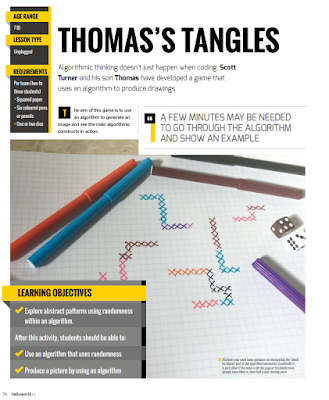Popular Posts
- This post is part of the materials for a session on Augmented Reality presenting at the 2019 SolSTICE eLearning and CLT Conference 5-6th Jun...
- Short presentation on an introduction to blockchain presented to the Northamptonshire Logistics Forum on 21st May 2019. Citation: Turner, ...
- Goodyear, A. , & Mu, M. (Accepted/In press). Abstract Painting Practice: Expanding in a Virtual World . Paper presented at ACM Interna...
- Popular Posts Software defined cognitive networking: supporting intelligent online video streaming Mu, M. (2018).
- A recent presentation by Dr Scott Turner of the University of Northampton to BCS Northampton branch discussed the idea of Benevolent Machine...
- A. Dawood, S. Turner and P. Perepa, "Natural-Spontaneous Affective-Cognitive dataset for Adult Students with and without Asperger Syn...
- In the 9th Edition of the Hello World , Thomas' Tangles has been published (pg 74-75), as part of an issue focussing on Computing and t...
- A compilation of games produced by Games students at the University of Northampton. Well done. Games Design BA (Hons) BA Game...
- Vossen, PH & Ajit, S 2018, ' Fuzzy scoring theory applied to team-peer assessment: additive vs. multiplicative scoring models on ...
- via GIPHY The junkbots project went to Duston Eldean Primary School, Northampton on 3rd April 2019, as part of their STEAM Week.
All views and opinions are the author's and do not necessarily reflected those of any organisation they are associated with. Twitter: @scottturneruon



















